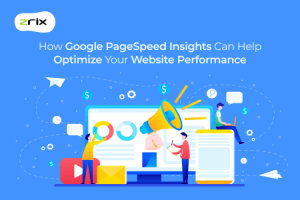Improving Performance with Insights on Your Website
The operation of a website that is successful involves more than simply an appealing design and information that is interesting to the user. In order to effectively optimize and improve the performance of your website, you need to have insights that can be put into action and drive your decisions. Obtaining insights that are generated by data can assist you in comprehending the behavior of users, optimizing content, and improving technical components in order to enhance overall performance. The purpose of this post is to investigate the ways in which you might employ website insights to improve performance and get better results.
Why Website Performance Matters
When it comes to user experience, search engine rankings, and conversion rates, the performance of a website becomes an extremely important factor. A website that is slow or performs poorly can cause users to abandon the site quickly, which can lead to a high bounce rate and missing out on potential possibilities.
User Experience and Engagement
The way in which users interact with your website is directly impacted by its performance. Users will become frustrated and leave the website if it takes a long time to load, if there are broken links, or if the navigation is terrible. Enhancing performance guarantees a more seamless experience, which in turn leads to increased levels of engagement and longer durations of visitation.
SEO and Search Engine Rankings
When it comes to search engines, particularly Google, websites that offer a flawless experience are given preferences. Whereas a slow website can have a detrimental impact on your search engine optimization efforts, a website that is both quick and efficient can lead to higher search ranks. One of the most important aspects of maintaining or boosting search rankings is performance optimization.
Conversion Rates
It is possible that prospective clients would abandon your website before completing a transaction or filling out a form if it is slow or if it does not perform properly. It is possible to eliminate friction in the conversion process by utilizing insights to improve performance, which will ultimately result in an increase in sales and further lead generation.

Gathering Insights on Website Performance
First things first: in order to optimize the performance of your website, you need to obtain insights from the appropriate tools and data. A number of approaches yield significant data that can be utilized to assist in locating areas that want enhancement.
Website Analytics Tools
Detailed reports on user activity are provided by tools like as Google Analytics, Hotjar, and Crazy Egg. These reports include information on bounce rates, time spent on page, click-through rates, and information about traffic sources. With the help of these insights, you will be able to identify the pages that are not functioning well or the locations where users are leaving.
Heatmaps
Heatmaps are a visual representation of how people interact with your website. They reveal which areas of your website receive the most attention and where visitors are clicking. By conducting an analysis of this data, you will be able to determine which aspects are not performing as intended or which areas require additional attention.
Page Speed Testing
Tests of the loading speed of your website can be performed with the use of applications such as Google PageSpeed Insights, GTMetrix, and Pingdom. These tools offer an analysis of performance bottlenecks, which may include instances such as huge images, code that has not been optimized, or poor server response times.
Key Areas for Improvement Based on Insights
The following phase, which comes after you have gained insights, is to execute modifications in order to improve the performance of your website. Pay attention to the aspects that have the greatest impact on the user experience and the efficiency of the technology.
Optimize Loading Speed
In terms of performance, page speed is one of the most important elements to consider. Bounce rates are decreased and user engagement is maintained when a website loads quickly. The compression of pictures, the utilization of a content delivery network (CDN), and the minification of CSS and JavaScript files are all common strategies for speed optimization.
Improve Mobile Responsiveness
It is crucial to ensure that your website is mobile-friendly because an increasing number of visitors are accessing websites through mobile devices. In order to improve the mobile user experience, it is important to implement principles of responsive design, optimize touch interactions, and reduce loading times on mobile devices.
Enhance Website Navigation
It is possible for consumers to swiftly find what they are seeking for when the navigation is clear and easy to understand. Streamlining the structure of your website, enhancing the internal linking, and ensuring that users can simply reach crucial pages are all possible outcomes of conducting user flow and behavior analysis.
Leveraging Insights for Content Optimization
The performance of a website is not solely associated with its speed and technical elements. The content of your website is a crucial factor in determining how users interact with it. As you refine your content strategy to better match the requirements of your audience, insights can serve as a roadmap to help you do so.

Identify Top-Performing Content
Through the utilization of analytics tools, it is possible to ascertain which material is generating the most traffic, maintaining the attention of consumers, and encouraging conversions. The pages that have performed very well can be used as templates for future material, which will assist you in replicating success across the entire website.
Improve Underperforming Pages
You will be able to determine whether content is not resonating with users if you check the insights on pages that have high bounce rates or low time on page. For the sake of enhancing engagement, you might want to think about updating these pages with new content, improved images, or more specific calls to action.
Optimize for SEO
Employ insights in order to recognize chances for SEO. Find the keywords that are bringing in the most traffic, and then optimize your content based on those keywords. You should make sure that your website’s meta descriptions, titles, and on-page content are regularly updated in order to maintain its relevance and competitiveness in search engine rankings.
Technical Optimization for Better Website Performance
In addition to the content and the user experience, technical optimizations are another important factor in increasing the performance of a website. When it comes to fixing technical issues that slow down your website or have a bad influence on the user experience, the insights that testing tools provide can be of great assistance.
Leverage Caching Techniques
The purpose of caching is to cache copies of the files on your website so that they load more quickly for people who return. You may reduce the amount of time it takes for your website to load for visitors who access it several times by utilizing browser caching and server-side caching.
Optimize Your Server and Hosting
A important factor that contributes to the performance of your website is the server that it is hosted on. If you want to assure consistency in your website’s uptime and faster page loads, you should think about upgrading to a faster server or transferring to a hosting provider that is more stable.
Fix Broken Links and Errors
404 errors and broken links not only irritate users but can also be detrimental to your search engine optimization. Make use of tools that can detect broken links or pages that are missing, and then swiftly fix or reroute them in order to guarantee a seamless experience for users.
Tracking Progress and Continuous Improvement
There is a continuous process involved in enhancing the performance of your website. As soon as the improvements have been implemented, it is absolutely necessary to continuously evaluate performance and make adjustments as required.
Regularly Monitor Analytics
In order to monitor the effects of modifications and make certain that they are having the desired effect, you should analyze your analytics on a regular basis. In order to assess whether or not more adjustments are required, it is important to look for patterns in user behavior, traffic patterns, and conversion rates.
Set Performance Benchmarks
To establish performance benchmarks and targets, you should make use of your initial findings. These benchmarks serve as a point of reference for monitoring current optimization efforts and give a reference point for measuring progress.
Test and Iterate
Maintaining a website’s performance is not a one-time endeavor. It is important to continually test new techniques, evaluate how effective they are, and make adjustments based on the results. Your website will continue to function at its highest level over time if you make a commitment to testing and developing it further.

Conclusion
In order to achieve better user engagement, higher search rankings, and improved conversion rates, it is essential to improve the performance of your website through the usage of insights. Both the user experience and the technical functionality of your website can be improved through the collection of data, the identification of areas that contain room for improvement, and the implementation of optimizations. Making updates and analyzing your website on a continuous basis will guarantee that it continues to be competitive and produces the best possible outcomes.





